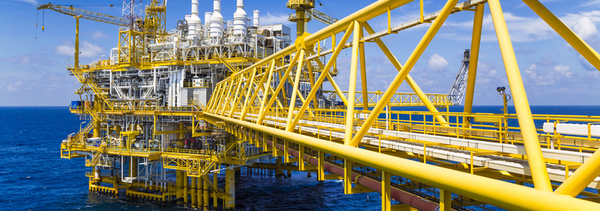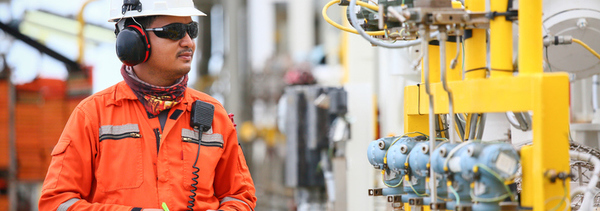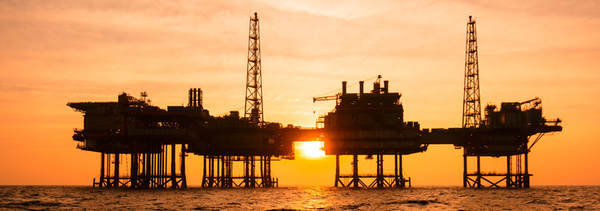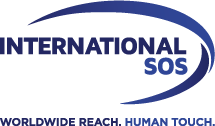Seadrill: Occupational Health
Overview
Seadrill is a leading off-shore drilling contractor, providing rigs for the oil and gas industry. It currently employs around 7000 people and has a fleet of 68 offshore drilling rigs.
Problem
Many employees on rigs are carrying out demanding physical work in tough conditions. Seadrill is very aware of this; ensuring the health and safety of its workforce is a priority. As well as having a safety team on each rig they have medics on board, to deal with health matters. These could be anything from personal issues (depression for example) to work-related incidents. The medics are externally sourced from International SOS.
The two companies have been working together for some time. Neil Forrest, Director HSSEQ at Seadrill, explains: ‘Being able to outsource medical services to external experts really helps. It’s even better that we can do this on a global basis. We know that cover is provided wherever needed and everyone is working to the same common practices.’

Solution
As the GMA explains: “Seadrill’s health and safety culture is born of the firm ambition of ‘zero harm to our workers’. International SOS and Seadrill have worked together for over 10 years to develop an integrated occupational health system. By working closely with HSE lead Neil Forrest we have been able to target illness rates on and offshore with specific health promotion. We experience less urgent and emergency cases requiring disembarkation from rigs due to better pre-deployment medical screening and are reducing absenteeism, improving productivity at a time when the industry is facing commercial head winds. Our joint ambition is to standardise the care workers get globally, improve the quality of service provided to our people while keeping a very close eye on health related expense.”
The OH team has been looking across all aspects of rig activity to identify any risks and establish how to mitigate them. Their output has been written up as global standards in Seadrill Company Directives. The aim is to create a best practice benchmark throughout the company. This only changes if there is a specific customer or local regulatory requirement to do things in a particular way.
All jobs on the rigs have been reviewed. Work on rigs can be very labour intensive with exposure to harsh elements. But not all jobs are the same. Working on a crane is very different from working on the drill floor. Each job is assessed according to the risks it is exposed to. Each ‘exposure group’ is given specific guidance and support. This can include stress tests and procedures for respiratory protection or manual handling.
This guidance is translated into action on the rigs by the resident medics. The medics give advice on a daily basis to rig workers in safety meetings and face to face. They deal with any issues that crop up and ensure all safety checks are in place. For example, they supply eye wash stations, and maintain chemical logs to record anything an employee comes into contact with.
When incidents do happen - such as a major illness or an accident - Seadrill carries out a Significant Event Analysis. The rig medics, the GMA and Seadrill personnel carry out a detailed review to see exactly what happened and what lessons can be learned. Any findings are shared with the other rigs to continue global learning and standard setting.

Ensuring Fitness for Work
As part of the Seadrill Wellness Agenda the team has undertaken a lot of work in close liaison with HR. This involves understanding the specific needs of new hires and their ‘fitness for work’, taking into account the needs of each specific job. Standards have been developed to cover this and to address an employee’s readiness to return to work after absence. Previously readiness to return to work was determined by a GP. But it was often found that GPs didn’t fully understand what was involved in working on a rig and gave the wrong advice. Now everything is linked to the same set of consistent standards.Disease prevention is a priority on rigs too. All employers want their staff to be healthy and avoid illness. But this is particularly important in the confines of a rig where it’s hard to evacuate a patient and there’s an increased risk of spreading infection. Campaigns have been created to prevent the spread of disease. Information and advice covers seasonal events, such as flu, and local issues such as malaria.
The OH brief has been further widened to address underlying health issues. Smoking, diet and exercise are popular topics. As Neil points out: ‘We aren’t there to tell our workers what they should do or not do. But we do take the opportunity to talk through the consequences of their actions and lifestyles and offer them help to change.’
A useful way of communicating this information is via Seadrill TV. This delivers silent infomercials on flat-screen TVs dotted around the rigs. Lots of different subjects relevant to life on the rig are covered and about one in five are health-related. The GMA has a series of 8 topics for year-round viewing and this is added to by the local medics.
Another challenge, especially in the relatively small space of a rig, is getting enough exercise. Some workers can be quite inactive, sitting at computers for a large part of their shift. Others have very labour intensive jobs, but they still benefit from certain types of exercise. To encourage exercise the rigs all have gyms and the on-board medics are happy to suggest appropriate routines.
There’s always something new for the OH team to do. They stay on top of all changes, including the personal habits of employees. For example, many rig workers are now in the habit of taking dietary supplements. Sports drinks are very popular. However, there is a knock-on effect; the caffeine content is affecting sleep patterns. The team has spotted this and is offering advice.

Impact
Neil concludes:
‘This ongoing review of all aspects of OH has led to many changes and improvements in our working environment. We look forward to making many more.’

 HOW CAN WE HELP?
HOW CAN WE HELP?







